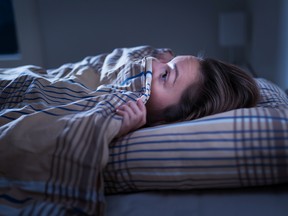
Reviews and recommendations are unbiased and products are independently selected. Postmedia may earn an affiliate commission from purchases made through links on this page.
Article content
A recent survey looked at what are the worst nightmares Canadians are facing.
Advertisement 2
Article content
Dreams and nightmares can often be a sign of stressful, emotional, overwhelming factors in real life permeating the brain and playing out in the unconscious mind.
Article content
Other times it could indicate anxiety and trigger in a person, a fear that they are not in control of their lives.
While one-off nightmares can replicate certain events, the ones that reoccur can damage a person’s social, emotional, and physical well-being.
RECOMMENDED VIDEO
The fine folks at SlotsMove surveyed 1,100 Canadians (an even split of males and females) about the nightmare themes that resonated with them most.
“Nightmares reflect emotions and concerns, so there can be no unequivocal answer as to which of them appear most often in people’s dreams,” the report stated.
Article content
Advertisement 3
Article content
These are the most common:

Falling down (65.1%)
While the most prevalent dreams involved fear in some way, falling topped the list – but at least there’s a physical explanation for it.
The muscles relax while a person is sleeping, or at the point of falling asleep, to the point that the brain interprets it as an actual fall.

Abortive escape attempts (64.3%)
People who feel trapped in situations without an apparent positive outcome tend to endure this hellscape of a nightmare of being chased and unable to escape.

Losing a loved one (55.7%)
According to experts, this is a sign that a change in a relationship has happened or is about to happen.
It’s not a necessarily negative or bad change; rather, it’s about one stage being over and another one starting.
Advertisement 4
Article content

Not having the ability to talk (44.4%)
This could be a dream to some but that feeling of incapacitation or becoming mute is similar to the inability-to-escape nightmares.
It’s all about feeling helpless or misunderstood.

Missing an appointment or event (32.0%)
This nightmare is typical for those whose daily routines are dictated by short-term deadlines.
It’s yet another fear, this time about being consistent with punctuality and it does not let the individual’s consciousness rest – even during sleep.
-
![]()
Latest studies suggest women suffer more nightmares than men do
-
![]()
Dreaming’s the great equalizer across the globe
-
![]()
The strange phenomena of grief dreaming
Other most common nightmares include natural disasters (31.8%), attending an exam unprepared (31.2%), getting lost (27.6%) and sustaining a physical injury (26%).
Advertisement 5
Article content
Some of the more odd dreams are having a conversation with the dead, an attack by bugs and beetles, technology glitches and the dreamer suddenly becoming white-haired.
Gender doesn’t play a factor in the types of nightmares people have but analysis of the survey showed that in some areas, women are more likely to have bad dreams than men.
Women are victims of domestic abuse far more often than men so it isn’t surprising that a higher percentage of female respondents have had nightmares of being attacked (56.2% vs. 43.8%)
Meanwhile, nightmares about devices not working are more common for men (66.3% vs 33.7%).
Stay connected with us on social media platform for instant update click here to join our Twitter, & Facebook
We are now on Telegram. Click here to join our channel (@TechiUpdate) and stay updated with the latest Technology headlines.
For all the latest Health & Fitness News Click Here





Comments
Postmedia is committed to maintaining a lively but civil forum for discussion and encourage all readers to share their views on our articles. Comments may take up to an hour for moderation before appearing on the site. We ask you to keep your comments relevant and respectful. We have enabled email notifications—you will now receive an email if you receive a reply to your comment, there is an update to a comment thread you follow or if a user you follow comments. Visit our Community Guidelines for more information and details on how to adjust your email settings.
Join the Conversation